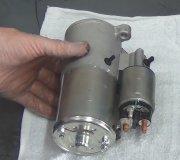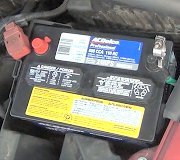Hi wyoscooter. Welcome to the forum. It's not often I get to have a conversation with someone who understands how this system works. Since no smart people have replied yet, I'll see if I can help.
In the world of tv repair, we often had to troubleshoot circuits involving large integrated circuits that we called "bucket brigades" because they did everything. The only way to narrow down the cause was to measure the voltages on every pin, often 60 or more of them. The same strategy applies to the Engine Computer except we can forget about the unrelated stuff and just concentrate on feeds, grounds, and inputs, and you said you already checked the inputs. A missing 12 volt feed that powers the coil and injector drivers might be a different feed that powers the hot side of those items. Also, once current has gone through the coils and injectors and returns to go through the drivers, it has to go through ground, so we have to check the ground wires too. Chrysler is famous about using multiple ground wires, usually two for high-current circuits and two for low-current circuits. If a common ground wire was used, a tiny voltage drop caused by the current pulses from the coils or injectors would affect the readings from the very low-current sensors.
To interrupt for a moment, I'm not familiar with the Vantage. I use the Chrysler DRB2 and DRB3. Those scanners have an actuator test mode that allows it to tell the computer to fire the coils or injectors. If you have that test mode, try to fire those items. If you can get a spark and hear an injector click, you know the ground circuit is working and the computer has control of the drivers. That would leave the input circuits. If the coils and injectors don't fire, look at all of the feeds and grounds.
You should have battery voltage on pin 3 all the time, pin 9 with ignition switch in "run", (mistake in service manual), and pin 8, (during cranking). You can use a test light or a digital voltmeter to look for these three feeds.
There's two ways to check the ground wires. With the ignition switch off, use a test light with the clip lead on the battery positive post, then probe the cavities in the PCM connector. The relatively high current of the test light will cause a noticeable voltage drop and dim light if the ground wire has high resistance. The second way is to use the voltmeter, but this won't be real effective because any voltage drop that would occur due to excessive resistance will only show up when a driver momentarily turns on. That will be hard for a voltmeter to catch so the results could be misleading. Still, anything more than about 0.2 volts should be investigated. The three drivers for the ignition coils will be turned on and conducting most of the time so there will always be SOME current going through the high-current ground wires, and there will be SOME voltage if there's high resistance in those wires, even if the voltage is jumping around.
The high-current ground wires are pins 11 and 12. The low-current signal ground wires are pins 4 and 5.
Caradiodoc
SPONSORED LINKS
Tuesday, May 18th, 2010 AT 1:40 PM




